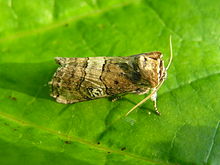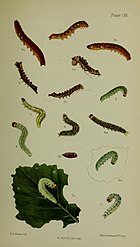| Tethea ocularis | |
|---|---|

| |
| Scientific classification | |
| Domain: | Eukaryota |
| Kingdom: | Animalia |
| Phylum: | Arthropoda |
| Class: | Insecta |
| Order: | Lepidoptera |
| Family: | Drepanidae |
| Genus: | Tethea |
| Species: | T. ocularis
|
| Binomial name | |
| Tethea ocularis | |
| Synonyms | |
| |
Tethea ocularis, the figure of eighty, is a moth of the family Drepanidae. The species was first described by Carl Linnaeus in his 1767 12th edition of Systema Naturae. It is found throughout Continental Europe and has a scattered distribution in England and Wales, although it is absent from Scotland and Ireland.


The wingspan is 35–45 mm; the dark brown forewings being marked with dark-centred white stigmata which do look rather like the number 80. The hindwings are grey. The species flies from May to July[1] and is attracted to light and sugar.
The grey and white larva feeds on poplar and aspen. The species overwinters as a pupa.